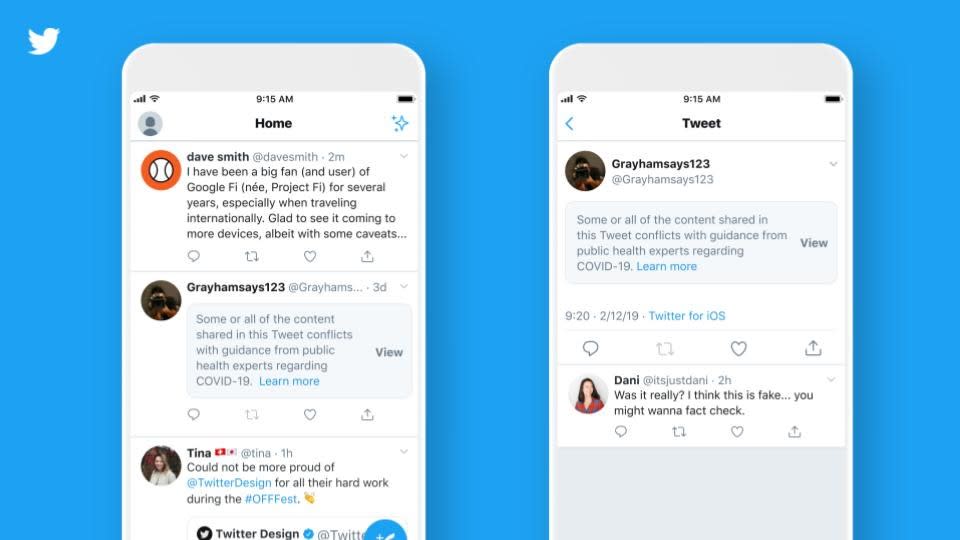Twitter will add labels to tweets with misleading COVID-19 claims
It hopes to provide more context around contentious tweets.
There's still a lot we don't know for sure about COVID-19, and incorrect information about the disease is still prevalent. To help clarify what's true and offer more context, Twitter will start applying labels and warning messages to coronavirus-related tweets containing "disputed or misleading information.” This is an expansion of a March policy update that targeted “fake and ineffective treatments” and other coronavirus hoaxes.
In February, Twitter brought in new measures to tackle deepfakes and manipulated content, including a label it’s applying to tweets that include synthetic and manipulated media. Starting today, you'll see similar labels on some tweets with "potentially harmful, misleading information related to COVID-19," head of site integrity Yoel Roth and director of policy strategy Nick Pickles wrote in a blog post.

The label will include a link to a Moment curated by Twitter or an external site that includes facts about COVID-19. You might see them on some tweets that were posted before today.
Twitter may also apply a warning to such tweets that include potentially harmful or misleading claims. Before you can view such a tweet, you’ll have to click or tap through a warning noting that it “conflicts with guidance from public health experts regarding COVID-19.”

As of now, Twitter will take action on coronavirus-related tweets based on three criteria: claims subject matter experts have shown to be false or misleading; disputed claims (i.e. those for which "the accuracy, truthfulness, or credibility of the claim is contested or unknown."); and unverified claims.
It suggests it won’t take action regarding the latter yet, but it’ll roll out more labels to offer more context about other types of rumors and unverified claims when necessary. That said, the company will remove tweets that include severely misleading information.

Twitter is monitoring tweets related to COVID-19 using its internal systems, which “help ensure we’re not amplifying tweets with these warnings or labels and detecting the high-visibility content quickly," Roth and Pickles wrote. The company's trusted partners are also helping to identify tweets that are "likely to result in offline harm."
